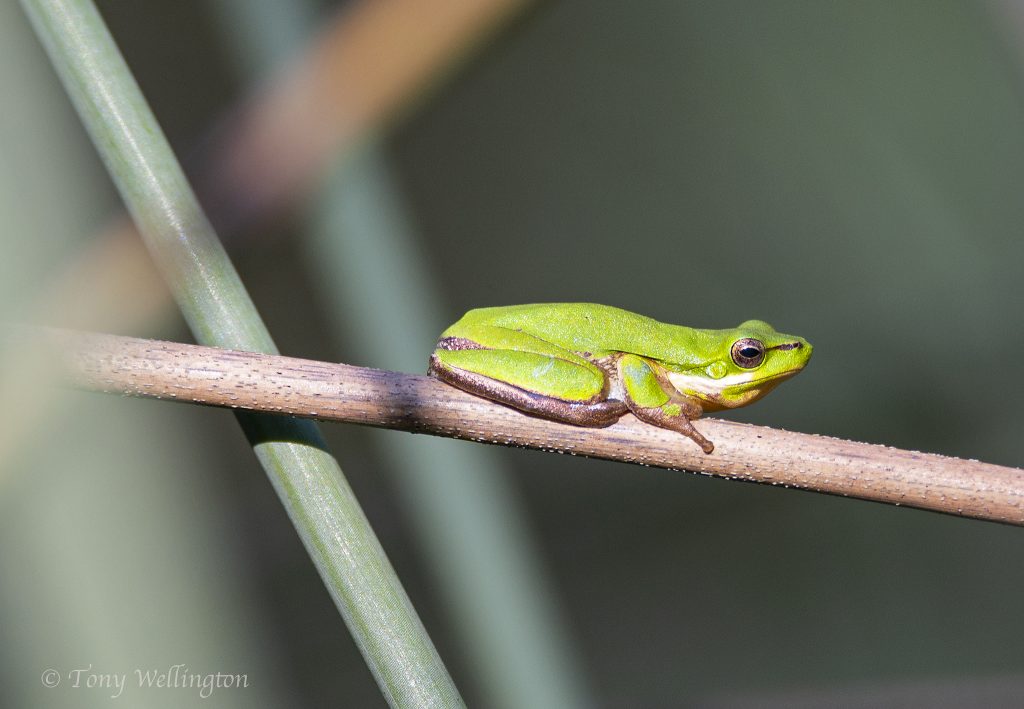
Dwarf Tree Frogs, aka Eastern Sedge Frogs, are tiny little frogs with great big voices. As a result, they are more often heard than seen.
They make a classic frog noise, described as a ratchet-like “reeek-pip”. Like diminutive barometers, they often sing to each other just before the onset of rain.
Just two and a half to three centimetres in body length, they are the smallest of our tree frogs. Individuals can be either bright green or bronze or a combination of both. The distinguishing features are a bronze stripe from eye to nostril, and a white or cream stripe from under the eye to the arm.
These charming little frogs are terrific climbers: they really deserve the epithet “tree frogs”. They can be found high up in trees as well as low to the ground in reeds or Lomandra. Incredibly adaptable, I’ve heard them calling from trees in shopping centre carparks.
One scientific study looked at the impact of traffic noise on Dwarf Tree Frog breeding behaviour. For some reason, female frogs were found to be less impacted by background noise than male frogs. Females responded to low quality calls whereas males ignored low quality calls: the implication being that background noise may interfere in mate selection by females, thus undermining the natural selection of fitter breeding partners.
Dwarf Tree Frogs are native to the east of Australia, from northern Qld to southern NSW. But they have been inadvertently introduced to Victoria, including Melbourne city, where breeding populations are now established. The Dwarf Tree Frog and the larger Dainty Tree Frog regularly get transported in boxes of tropical fruit. The Victorian Frog Group estimates that some 6,000 frogs are introduced this way into Victoria each year. Dainty Tree Frogs don’t survive Victorian winters, but our adaptable little friends the Dwarf Tree Frogs are coping with the chilly southern climes. There are some concerns that this artificial movement of frogs via fruit boxes may be helping spread the fungal disease that is having such a disastrous impact on many frog species.

Amphibians are the most threatened of all vertebrates based on current rates of decline and extinction. Where 20% of the world’s vertebrate species are currently classified as endangered or threatened on the IUCN Red List, that figure jumps to 41% for amphibians. But with the Eastern Dwarf Tree Frog’s adaptive capacity, perhaps they are better positioned than most of their ilk to deal with a changing climate?


